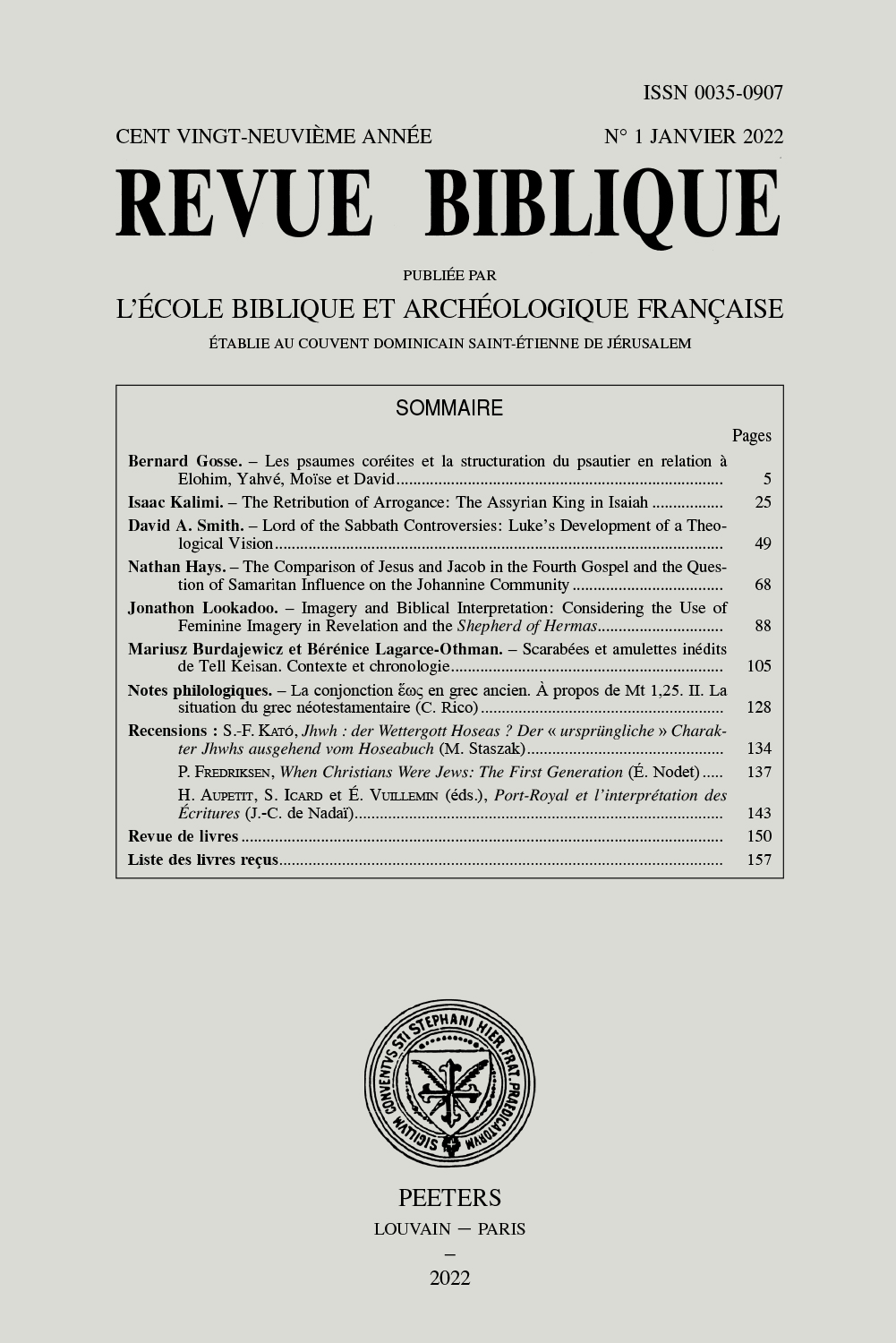 previous article in this issue previous article in this issue | next article in this issue  |

Preview first page |
Document Details : Title: Les manuscrits syriaques et garshuni du couvent Saint-Étienne Author(s): CROQ, Alice , NTAMAK SONGUÉ, Bernard Didier Journal: Revue Biblique Volume: 131 Issue: 4 Date: 2024 Pages: 595-608 DOI: 10.2143/RBI.131.4.3293975 Abstract : Le couvent Saint-Étienne de Jérusalem abrite quatre manuscrits en écriture syriaque dont l’existence n’a jamais été signalée à la communauté savante. Ces manuscrits ont pourtant une forme et un contenu du plus grand intérêt pour ceux qui étudient les traditions chrétiennes orientales. On y trouve notamment un manuscrit de la Peshitta du XIIIe siècle qui comporte encore des éléments de reliure. Il faut aussi mentionner une chaîne exégétique arabe sur le NT, de la main d’un copiste talentueux, l’évêque syro-orthodoxe Grégoire de Mardin (circa 1540-1577). Outre la description des manuscrits, cet article tente de retracer le contexte historique de leur arrivée au couvent à la fin du XIXe siècle. The St. Stephen Priory in Jerusalem is home to four manuscripts in Syriac script whose existence has never been brought to the attention of the scholarly community. Yet their form and content are of the utmost interest to those studying Eastern Christian traditions. Among them is a 13th century manuscript of the Peshitta, which still contains some binding elements. We should also mention an Arabic exegetical chain on the NT, by the hand of a talented copyist, the Syrian Orthodox Bishop Gregory of Mardin (circa 1540-1577). Besides describing the manuscripts, this article traces the historical background to their arrival at the convent at the end of the 19th century. |
|


